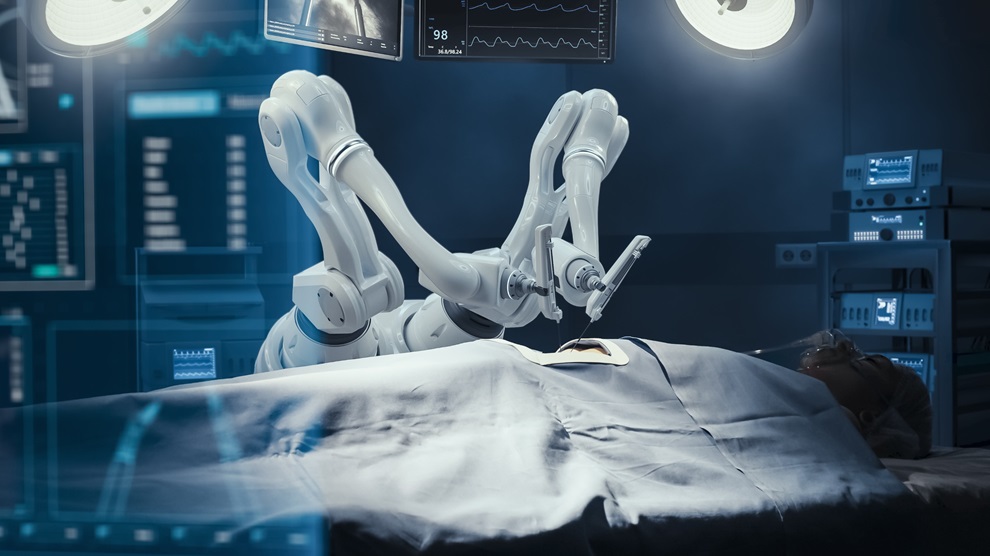Robotically Assisted Lung Transplants Could Soon Become a Reality
|
By HospiMedica International staff writers Posted on 12 Apr 2024 |

Annually, around 4,600 lung transplants are conducted globally. While robots are frequently utilized in various surgeries, their use in lung transplants has been uncommon. Although robotic assistance has enhanced lung cancer surgeries by making them minimally invasive, lung transplant recipients still undergo more invasive surgical procedures. However, advancements in robotic technology are now being extended into the field of lung transplants.
In February 2023, a team of surgeons at Vall d'Hebron University Hospital (Barcelona, Spain) successfully performed Spain’s first robotically assisted single-lung transplant and followed with a second operation three months later. Both patients exhibited significant improvement during their recovery, requiring only mild pain management, a testament to the less invasive nature of the surgery. The primary aim was to minimize the surgical incision and reduce the need for strong pain medication, which can adversely affect wound healing. Extensive preparatory work was done by the surgical team, including practice on synthetic lungs and large animal models, to refine their technique. They discovered that by deflating the lung and utilizing the natural elasticity of the skin, it was possible to make smaller incisions below the sternum for both removing and inserting the lungs.
Following these successful procedures, the team is collaborating with a medical device company to develop robotic instruments tailored for lung transplantation. Their future objectives include performing a bilateral lung transplant and increasing the number of robotically assisted surgeries to five this year and ten in the next. They are also keen on disseminating this innovative technique to more lung transplant programs. The team believes that less invasive surgery will yield better outcomes for lung transplant patients, although more data are needed to validate this approach. Additionally, further enhancements in robotic technology are required before it can be routinely adopted for lung transplantation.
“Lung transplants are a very tough procedure, from donor selection through the surgery to the postoperative period,” said Albert Jauregui, MD, PhD, who led the surgical team. “Unlike other organs that are all protected inside the body, the lungs are connected to the environment through breathing. It’s one of the most difficult organs to transplant.”
Related Links:
Vall d'Hebron University Hospital
Latest Surgical Techniques News
- Bioprinted Aortas Offer New Hope for Vascular Repair
- Early TAVR Intervention Reduces Cardiovascular Events in Asymptomatic Aortic Stenosis Patients
- New Procedure Found Safe and Effective for Patients Undergoing Transcatheter Mitral Valve Replacement
- No-Touch Vein Harvesting Reduces Graft Failure Risk for Heart Bypass Patients
- DNA Origami Improves Imaging of Dense Pancreatic Tissue for Cancer Detection and Treatment
- Pioneering Sutureless Coronary Bypass Technology to Eliminate Open-Chest Procedures
- Intravascular Imaging for Guiding Stent Implantation Ensures Safer Stenting Procedures
- World's First AI Surgical Guidance Platform Allows Surgeons to Measure Success in Real-Time
- AI-Generated Synthetic Scarred Hearts Aid Atrial Fibrillation Treatment
- New Class of Bioadhesives to Connect Human Tissues to Long-Term Medical Implants
- New Transcatheter Valve Found Safe and Effective for Treating Aortic Regurgitation
- Minimally Invasive Valve Repair Reduces Hospitalizations in Severe Tricuspid Regurgitation Patients
- Tiny Robotic Tools Powered by Magnetic Fields to Enable Minimally Invasive Brain Surgery
- Magnetic Tweezers Make Robotic Surgery Safer and More Precise
- AI-Powered Surgical Planning Tool Improves Pre-Op Planning
- Novel Sensing System Restores Missing Sense of Touch in Minimally Invasive Surgery
Channels
Critical Care
view channel
Mechanosensing-Based Approach Offers Promising Strategy to Treat Cardiovascular Fibrosis
Cardiac fibrosis, which involves the stiffening and scarring of heart tissue, is a fundamental feature of nearly every type of heart disease, from acute ischemic injuries to genetic cardiomyopathies.... Read more
AI Interpretability Tool for Photographed ECG Images Offers Pixel-Level Precision
The electrocardiogram (ECG) is a crucial diagnostic tool in modern medicine, used to detect heart conditions such as arrhythmias and structural abnormalities. Every year, millions of ECGs are performed... Read morePatient Care
view channel
Portable Biosensor Platform to Reduce Hospital-Acquired Infections
Approximately 4 million patients in the European Union acquire healthcare-associated infections (HAIs) or nosocomial infections each year, with around 37,000 deaths directly resulting from these infections,... Read moreFirst-Of-Its-Kind Portable Germicidal Light Technology Disinfects High-Touch Clinical Surfaces in Seconds
Reducing healthcare-acquired infections (HAIs) remains a pressing issue within global healthcare systems. In the United States alone, 1.7 million patients contract HAIs annually, leading to approximately... Read more
Surgical Capacity Optimization Solution Helps Hospitals Boost OR Utilization
An innovative solution has the capability to transform surgical capacity utilization by targeting the root cause of surgical block time inefficiencies. Fujitsu Limited’s (Tokyo, Japan) Surgical Capacity... Read more
Game-Changing Innovation in Surgical Instrument Sterilization Significantly Improves OR Throughput
A groundbreaking innovation enables hospitals to significantly improve instrument processing time and throughput in operating rooms (ORs) and sterile processing departments. Turbett Surgical, Inc.... Read moreHealth IT
view channel
Printable Molecule-Selective Nanoparticles Enable Mass Production of Wearable Biosensors
The future of medicine is likely to focus on the personalization of healthcare—understanding exactly what an individual requires and delivering the appropriate combination of nutrients, metabolites, and... Read more
Smartwatches Could Detect Congestive Heart Failure
Diagnosing congestive heart failure (CHF) typically requires expensive and time-consuming imaging techniques like echocardiography, also known as cardiac ultrasound. Previously, detecting CHF by analyzing... Read moreBusiness
view channel
Expanded Collaboration to Transform OR Technology Through AI and Automation
The expansion of an existing collaboration between three leading companies aims to develop artificial intelligence (AI)-driven solutions for smart operating rooms with sophisticated monitoring and automation.... Read more

















